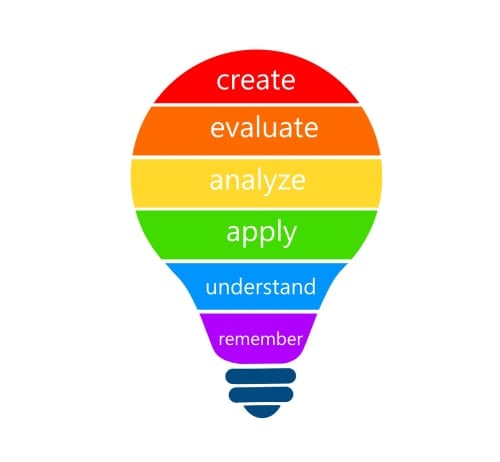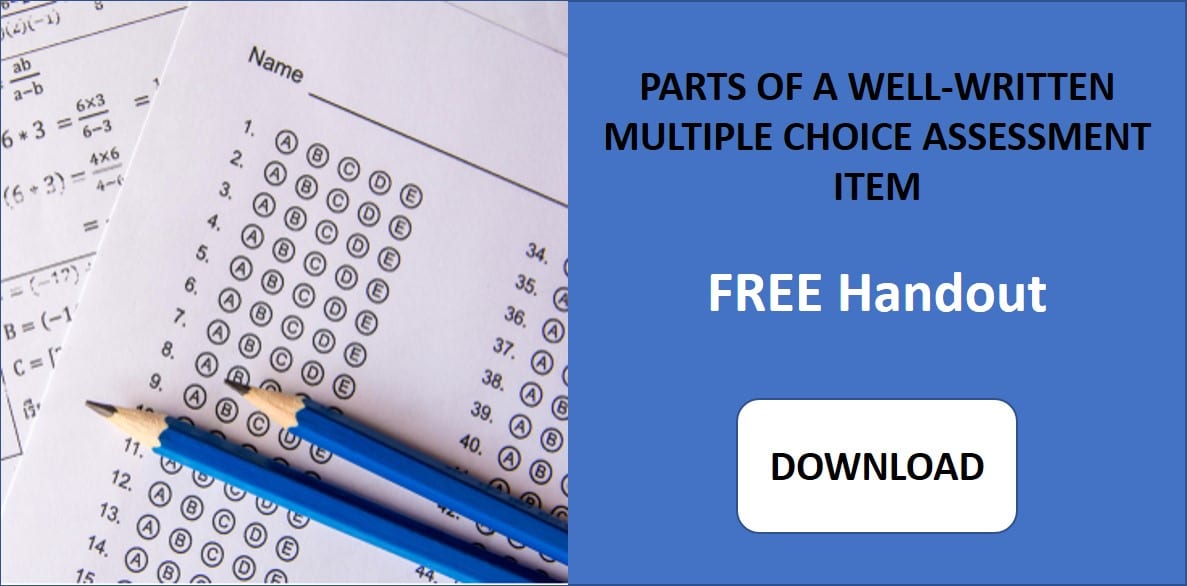Bloom’s Taxonomy is the hallmark of learning models used today. In fact, most people utilize the strategies outlined in Bloom’s without even knowing it. Through early school experiences, we are taught to function through remembering, understanding/applying, and analyzing, which are the very tenets of Bloom’s. We take the most basic key points and develop or retrieve more information depending on how much we want to deduce.
Let’s take a closer look at Bloom’s Taxonomy fully for clarification:
- Remembering: the basic recall of information presented through various methods. When we “remember” something, we are able to name it, locate it, define it, etc. We are able to take the content and paint a visual for the learner.
- Understanding: the demonstration of what we remember. When we “understand” something, we are able to apply that knowledge in a myriad of ways. We may compute, illustrate, or show others how we interpret that particular concept.
- Applying: the solving of problems associated with basic understanding: When we “apply” something, we try to understand its relevance in new situations.
- Analyzing: the investigation of the concept for which we previously demonstrated understanding. When we “analyze” something, we break it down so that we can find connections that make the parts a whole.
- Evaluating: the process in which the content is examined for validity. When we “evaluate” something, we have to prepare for debate and discussion on prior analysis.
- Creating: the development or production of new ideas based on an extensive assessment of a concept. When we “create” something, we are able to build new and interesting phenomena based on the discernment we gained from the previous stages of the model.
Teaching and learning today both involve the need to evaluate participants on how well they comprehend information. As there are varying levels within Bloom’s, it is imperative that the assessment correlate with the level of education or training in which the participants are enrolled. For instance, one would not present a test at a basic Bloom’s level of remembering to a group of graduate students. They should be deep in the analysis phase and evaluating concepts on their own. Likewise, a group of kindergarteners would not do well with an assessment that merely focused on their understanding and analysis.
Here are a few things to consider when writing assessment items using Bloom’s Taxonomy:
- Although Bloom’s starts at a basic level of remembering, it is important that a simplistic fill-in-the-blank type of recall does not put Bloom’s into practice. The item should encourage the learner to think about an appropriate response.
- Assessment items should rely on the assumption that there was a process of teaching and learning that took place before the evaluation process.
- The use of Bloom’s should involve the application of the learner’s experiences. The learner must be able to use some discernment of the world around him or her in order to explain why a concept is relevant.
- Developing an assessment item using Bloom’s Taxonomy assumes the learner is not complacent with surface understanding. The item should take into account the learner’s effort in processing a concept fully.
- Applying Bloom’s Taxonomy to assessment items must consider the ability of the learner to engage others and effect change simply as a result of shared awareness. Bloom’s is built upon the reciprocation of thoughts and ideas.
Bloom’s Taxonomy is not just a checklist to utilize when teaching and training; it is a method of learning and development that is designed to increase, encourage, and motivate learners to attain a deeper acuity of how concepts work together.
You can learn more about writing effective multiple-choice items in this free handout.






